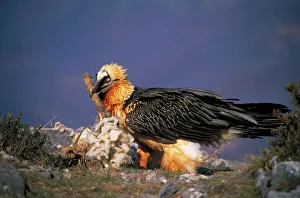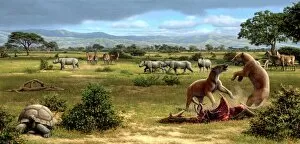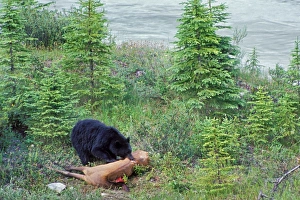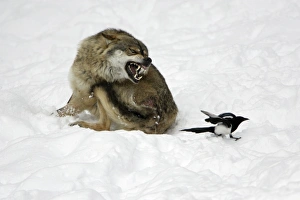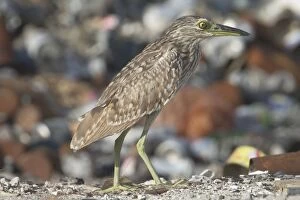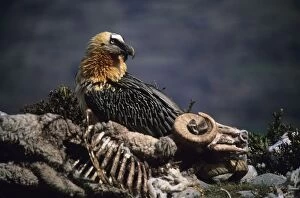Scavanging Collection
"Scavenging: Nature's Cleanup Crew" In the rugged Pyrenees of Spain, a magnificent Bearded Vulture, also known as the Lammergeier
All Professionally Made to Order for Quick Shipping
"Scavenging: Nature's Cleanup Crew" In the rugged Pyrenees of Spain, a magnificent Bearded Vulture, also known as the Lammergeier, soars through the vast skies with a carcass bone clutched firmly in its beak. With a maximum wingspan of 10 feet, this remarkable bird is truly a sight to behold. The Bearded Vulture is not your average scavenger; it is the only bone-eating specialist bird in the world. Found in Spain, France, Greece, Turkey, Italy, and even Africa, this rare creature plays an essential role in maintaining ecological balance. As we delve into ancient times through mesmerizing artwork depicting wildlife from the Miocene era (Picture No. 10735285), we are reminded that scavenging has been an integral part of nature's cycle for millions of years. The survival instincts and adaptability displayed by these creatures have allowed them to thrive amidst changing landscapes. Closer to home in Bedfordshire UK (Picture No. 10787233), we encounter another form of scavenging – that of the resourceful House Mouse. These tiny rodents leave their mark on chewed electrical cables (Bedfordshire UK 1519). Their relentless gnawing may cause inconvenience but serves as a reminder that even small beings play significant roles within ecosystems. Moving across continents to Kootenay National Park in Northern Rockies British Columbia (June - MA536), we witness yet another example of scavenging prowess exhibited by majestic Black Bears feeding on an elk carcass. This scene showcases how larger predators contribute to nutrient recycling and maintain harmony within their habitats. From soaring vultures to industrious mice and mighty bears – each species fulfills its unique purpose as nature's cleanup crew. Scavengers ensure no resources go wasted while simultaneously preventing disease outbreaks caused by decaying matter.

